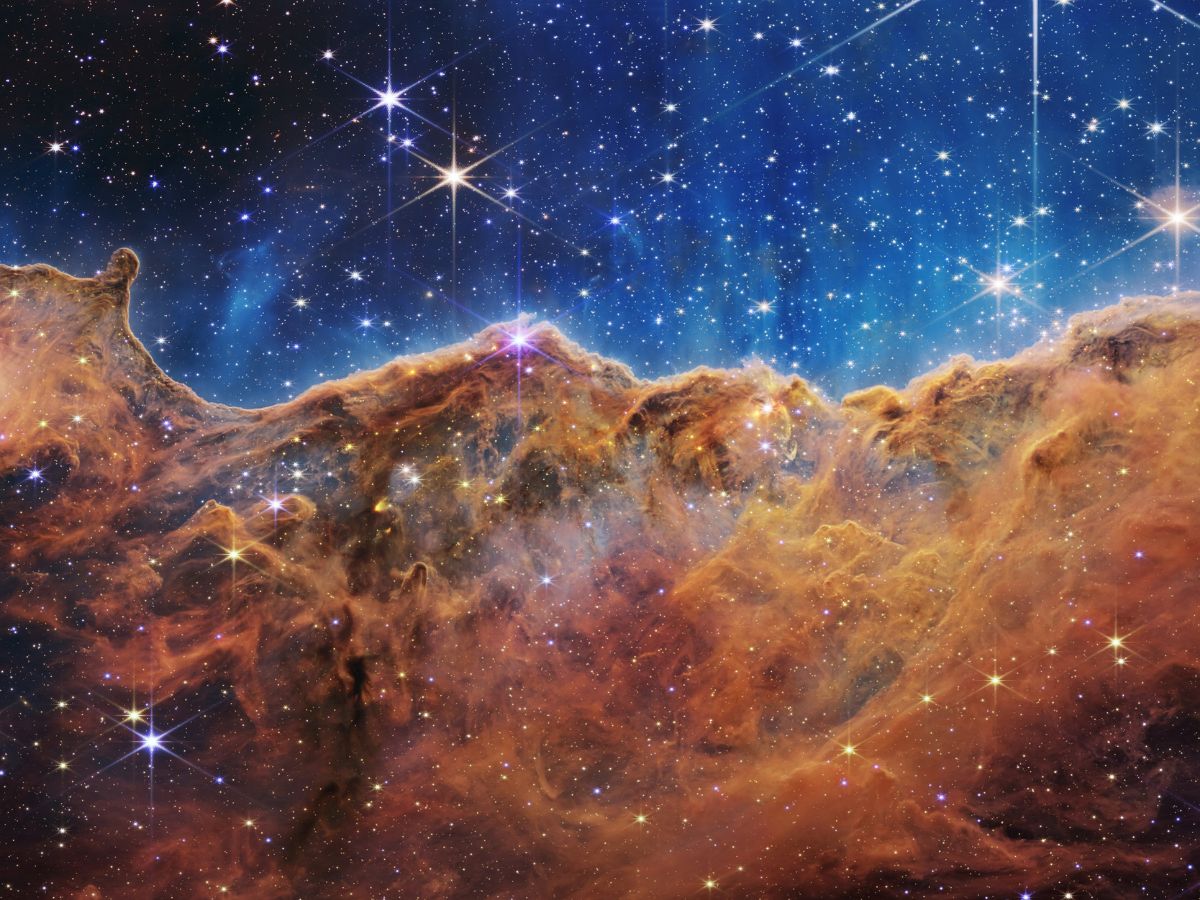You Saw The First Full-Colour Image From James Webb Space Telescope. Here's The Full Suite
NASA has unveiled the full suite of the first full-colour images captured by the James Webb Space Telescope. Webb has revealed interesting details about Stephan's Quintet and the Carina Nebula

NASA unveiled the entire suite of the first full-colour images captured by the James Webb Space Telescope on Tuesday, July 12. Earlier in the day, the first full-colour image captured by Webb was unveiled.
Webb's First Deep Field
Known as Webb's First Deep Field, this is an image of galaxy cluster SMACS 0723. According to the European Space Agency (ESA), the image of the galaxy cluster is “overflowing with detail”. Thousands of galaxies have appeared in Webb's view for the first time. The faintest objects ever observed in infrared light have also appeared in Webb's view.

Webb's first full-colour image shows the galaxy cluster SMACS 0723 as it appeared 4.6 billion years ago. According to NASA, the combined mass of the galaxy cluster acts as a gravitational lens. This magnifies much more distant galaxies behind the galaxy cluster.
Webb's First Deep Field has been captured by the telescope's Near-Infrared Camera (NIRCam), and is a composite made from images at different wavelengths, totalling 12.5 hours.
Gas Giant Exoplanet WASP-96 b
The second image, which is part of the complete suite of the first full-colour images captured by Webb, is that of a distant planet called WASP-96 b.

Webb, the world's largest and most powerful space telescope, has imaged the distinct signature of water, along with evidence for clouds and haze, in the atmosphere surrounding a hot, puffy, gas giant planet. The planet is orbiting a distant Sun-like star. Webb has revealed the steamy atmosphere of the distant planet in detail.
Webb's enormous mirror and precise instruments have captured the most detailed measurements of starlight filtering through the atmosphere of WASP-96 b, an exoplanet.
According to NASA, the spectrum of light, which contains information about the makeup of a planetary atmosphere 1,150 light-years away from Earth, reveals the distinct signature of water.
Webb's detailed observation of the atmosphere of an exoplanet marks a giant leap forward in the search for potentially habitable planets beyond Earth.
The image of the exoplanet was captured by the Near-infrared imager and slitless spectrograph (NIRISS), an instrument on Webb.
Southern Ring Planetary Nebula
Webb's third image to be unveiled is that of the Southern Ring planetary nebula or the "Eight-burst Nebula". According to NASA, planetary nebulae are the shells of gas and dust ejected from dying stars.

The powerful infrared view of Webb has brought the nebula's second star into full view, along with exceptional structures created as the stars shape the gas and dust around them. The infrared view of the telescope also reveals details of the exceptional structures created as the stars shape the gas and dust around them.
According to NASA, new details from the late stages of a star's life will help the world better understand how stars evolve and transform their environments. The image has captured the "final performance" of a dying star in fine detail.
A cache of distant galaxies can also be seen in the background. Most of the multi-coloured points seen in the image are galaxies, not stars.
The Southern Ring planetary nebula has been imaged using the Near-Infrared Camera (NIRCam) and the Mid Infra-Red Instrument (MIRI).
Two stars, locked in a tight orbit, shape the local landscape of the cosmic entity. The image from Webb's NIRCam (left) shows the stars and their layers of light. Meanwhile, the image from Webb's MIRI (right) shows for the first time that the second star is surrounded by dust.
According to NASA, the brighter star, which is in an earlier stage of its evolution, will probably eject its own planetary nebula in the future.
The brighter star influences the appearance of the nebula. As the two stars orbit one another, they "stir the pot" of gas and dust. This causes asymmetrical patterns.
Stephan's Quintet
The fourth full-colour image is that of a galaxy group called "Stephan's Quintet". Through its fourth full-colour image, Webb has revealed never-before-seen details of Stephan's Quintet. Due to the close proximity of Stephen's Quintet, astronomers can see galactic mergers and interactions. The image shows in rare detail how interacting galaxies trigger star formation in each other and how gas in galaxies is being disturbed.

According to NASA, Webb's image shows outflows driven by a black hole in Stephan's Quintet in a level of detail never seen before.
The early universe was superheated, as a result of which infalling material may have fuelled very energetic black holes. Also, tight galaxy groups like Stephan's Quintet are likely to have been more common in the early universe.
The enormous mosaic of Stephan's Quintet is the largest image to date from the Webb Space Telescope. The MIRI and NIRCam instruments captured the visual grouping of the five galaxies of Stephan's Quintet. Together, the galaxies are also known as the Hickson Compact Group 92.
The galaxies in Stephan's Quintet are in a galactic dance with each other. The image sheds light into galaxy evolutions and black holes.
Carina Nebula
The fifth and final full-colour image captured by the James Webb Space Telescope is that of the Carina Nebula. The image reveals baby stars in the Carina Nebula, where ultraviolet radiation and stellar winds shape colossal walls of dust and gas.

The image is called "Cosmic Cliffs", and is a seemingly three-dimensional picture. A landscape of "mountains" and "valleys" speckled with glittering stars can be seen in the image.
The landscape is the edge of a nearby, young star-forming region called NGC 3324 in the Carina Nebula. Webb has captured the image in infrared light.
“Cosmic Cliffs” reveals for the first time previously invisible areas of star birth. The image reveals the "glittering landscape" of star birth.
Webb's extreme sensitivity, spatial resolution, and imaging capability helped capture the cosmic objects in the earliest, rapid phases of star formation.
NGC 3324 is located roughly 7,600 light-years away from Earth. Webb's NIRCam and MIRI captured the star-forming region.
Webb's NIRCam instrument has unveiled hundreds of previously hidden stars, and even numerous background galaxies.
MIRI has revealed the structures that are embedded in the dust and uncovered the stellar sources of massive outflows.
Webb is an international collaboration between NASA, ESA, and the Canadian Space Agency (CSA). The space-based, infrared observatory is a powerful time machine that will look back in time to see the first stars and galaxies forming out of the darkness of the early universe. Webb will examine every phase of cosmic history, from the first luminous glows after the Big Bang to the formation of galaxies, stars, and planets, and the evolution of our own solar system.
Related Video
Southern Rising Summit 2024: How Important is Self-Awareness? Insights from Anu Aacharya | ABP LIVE






































